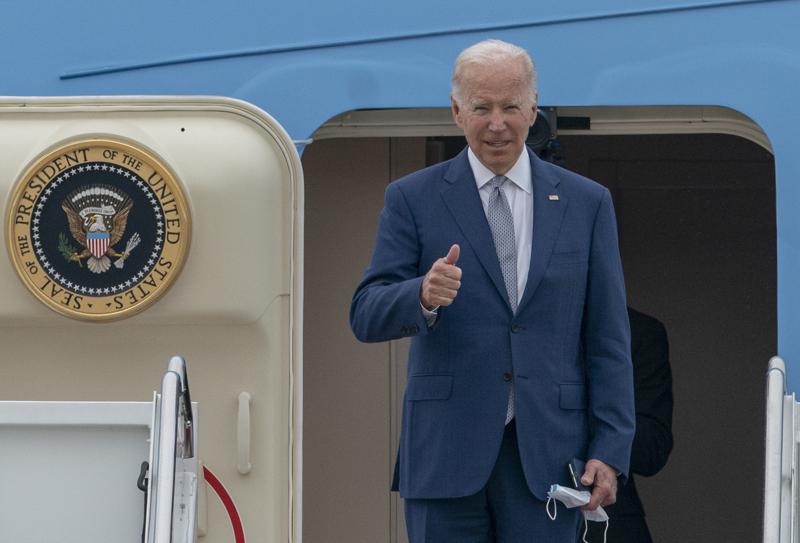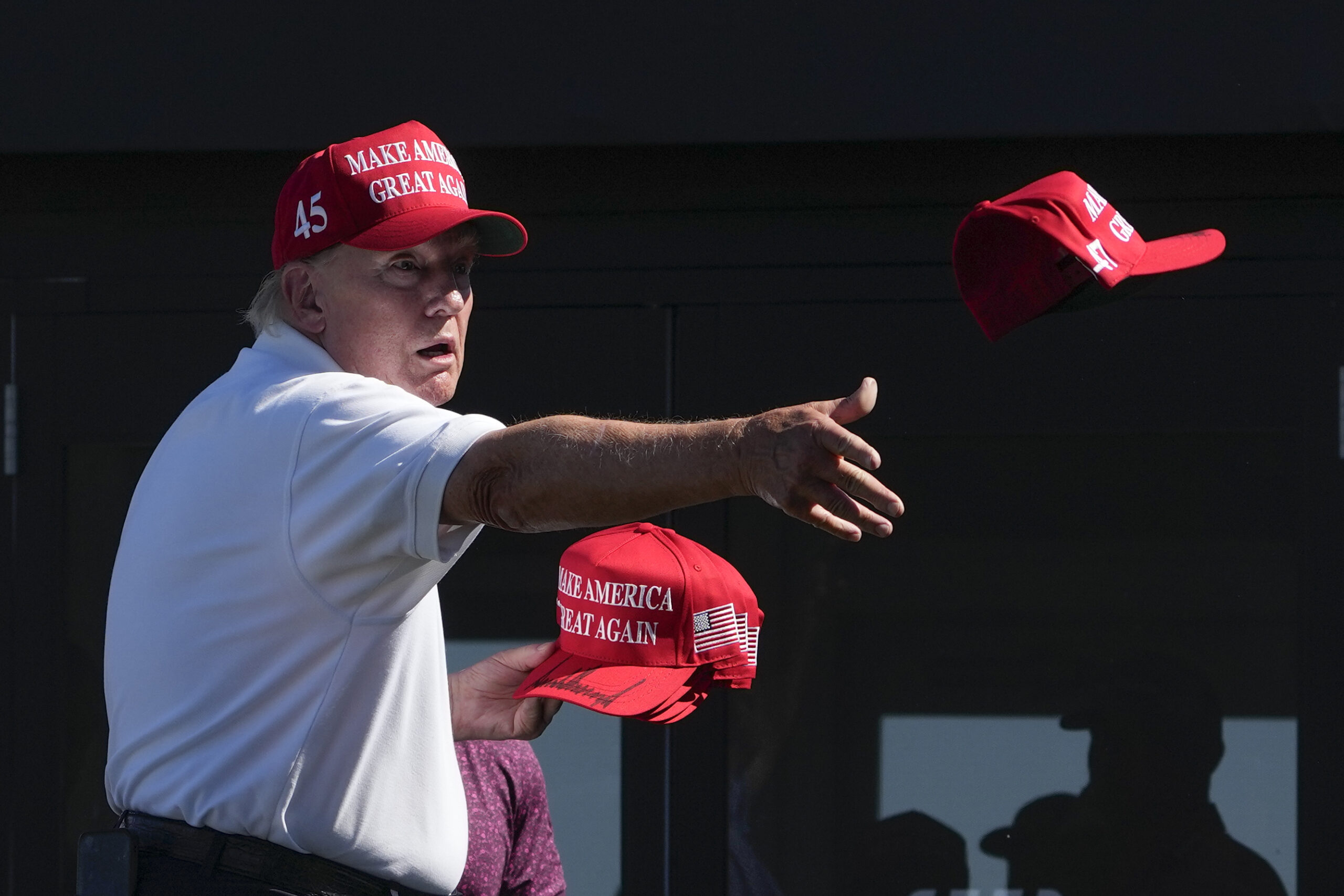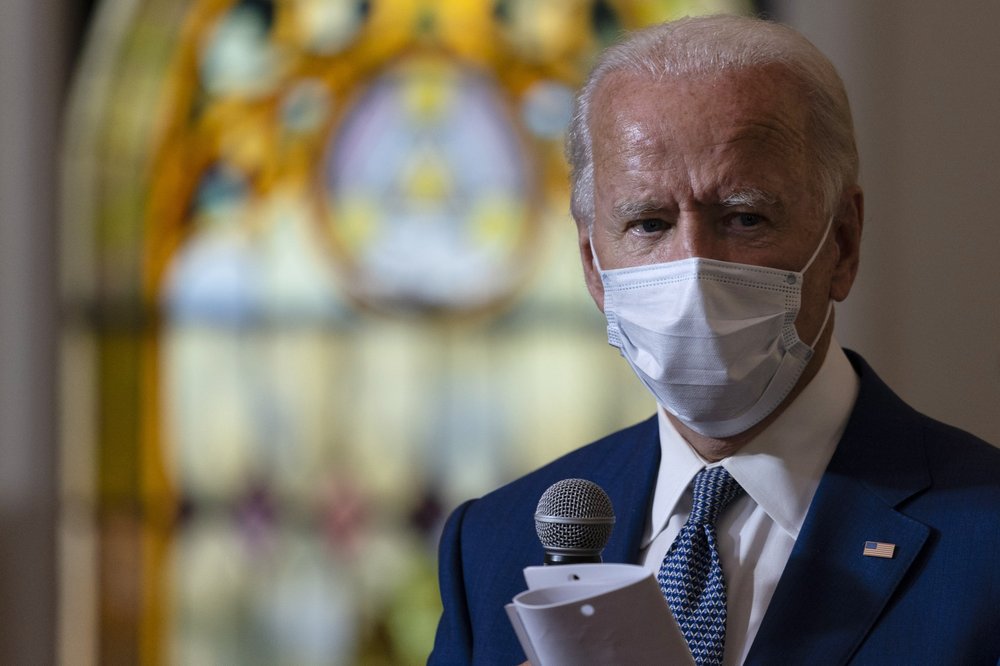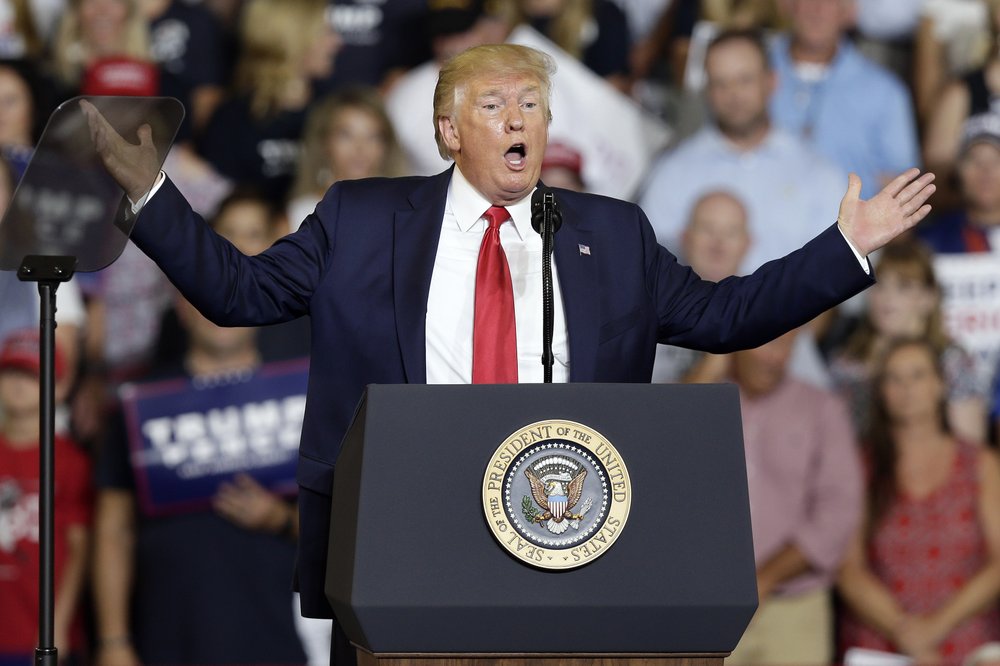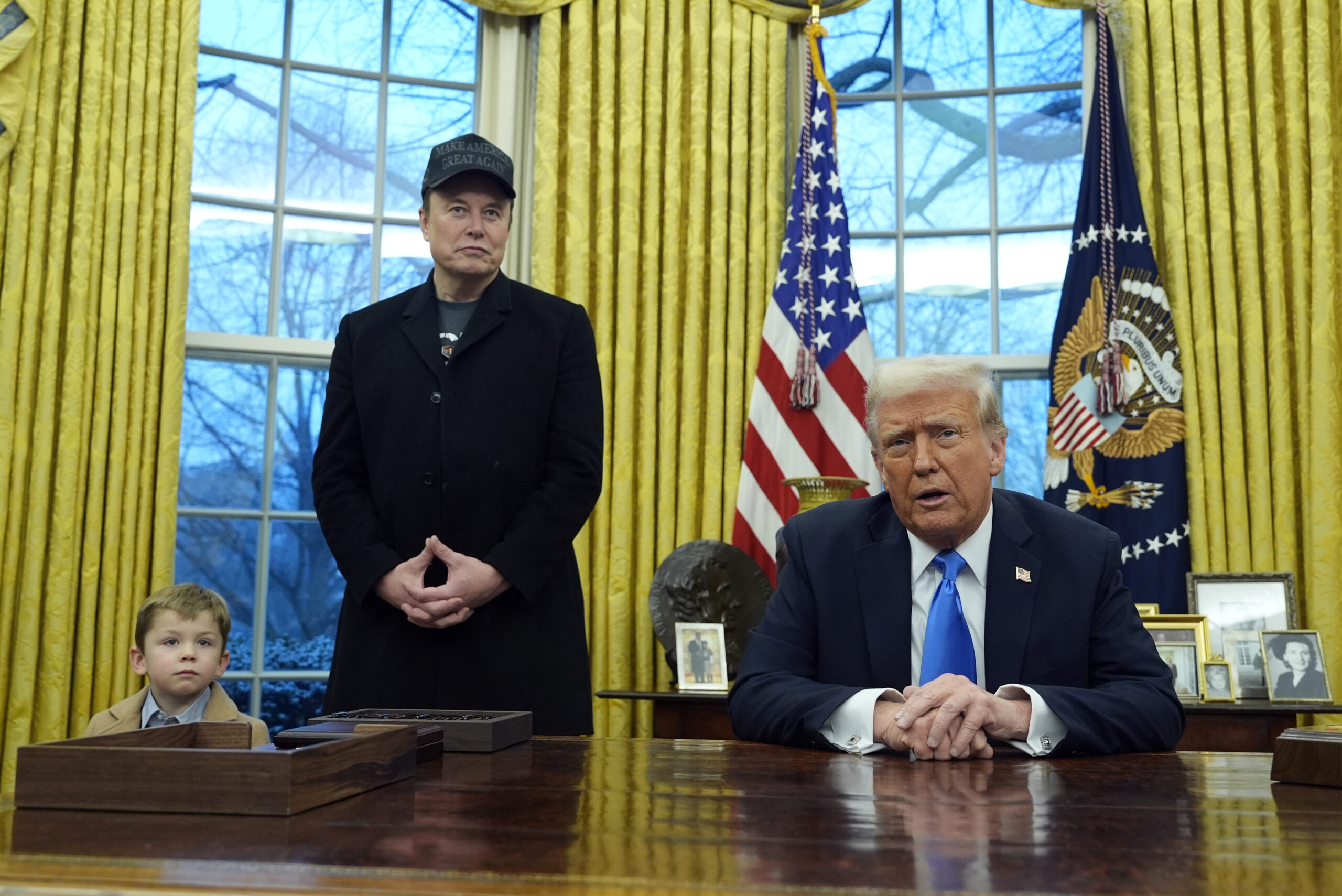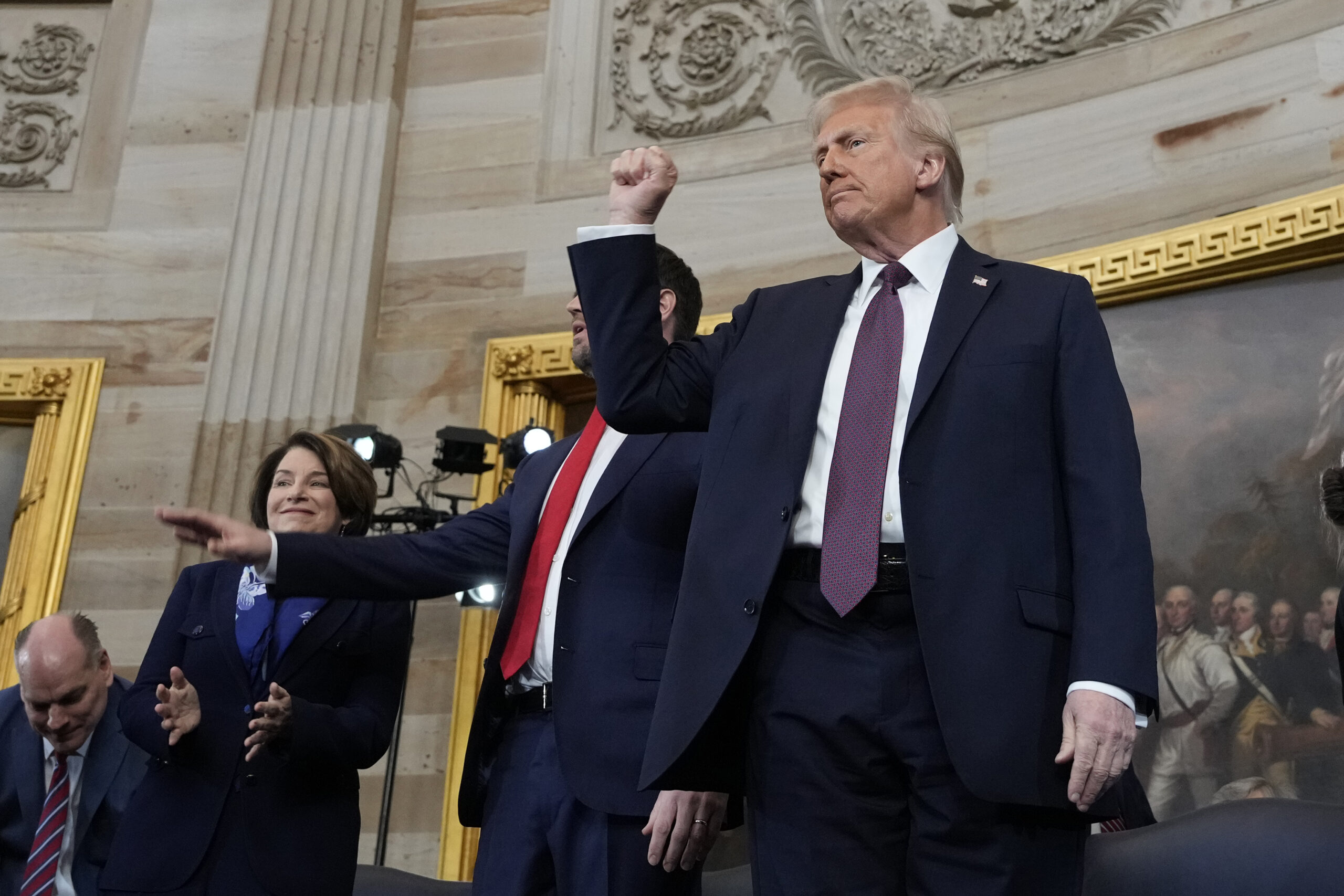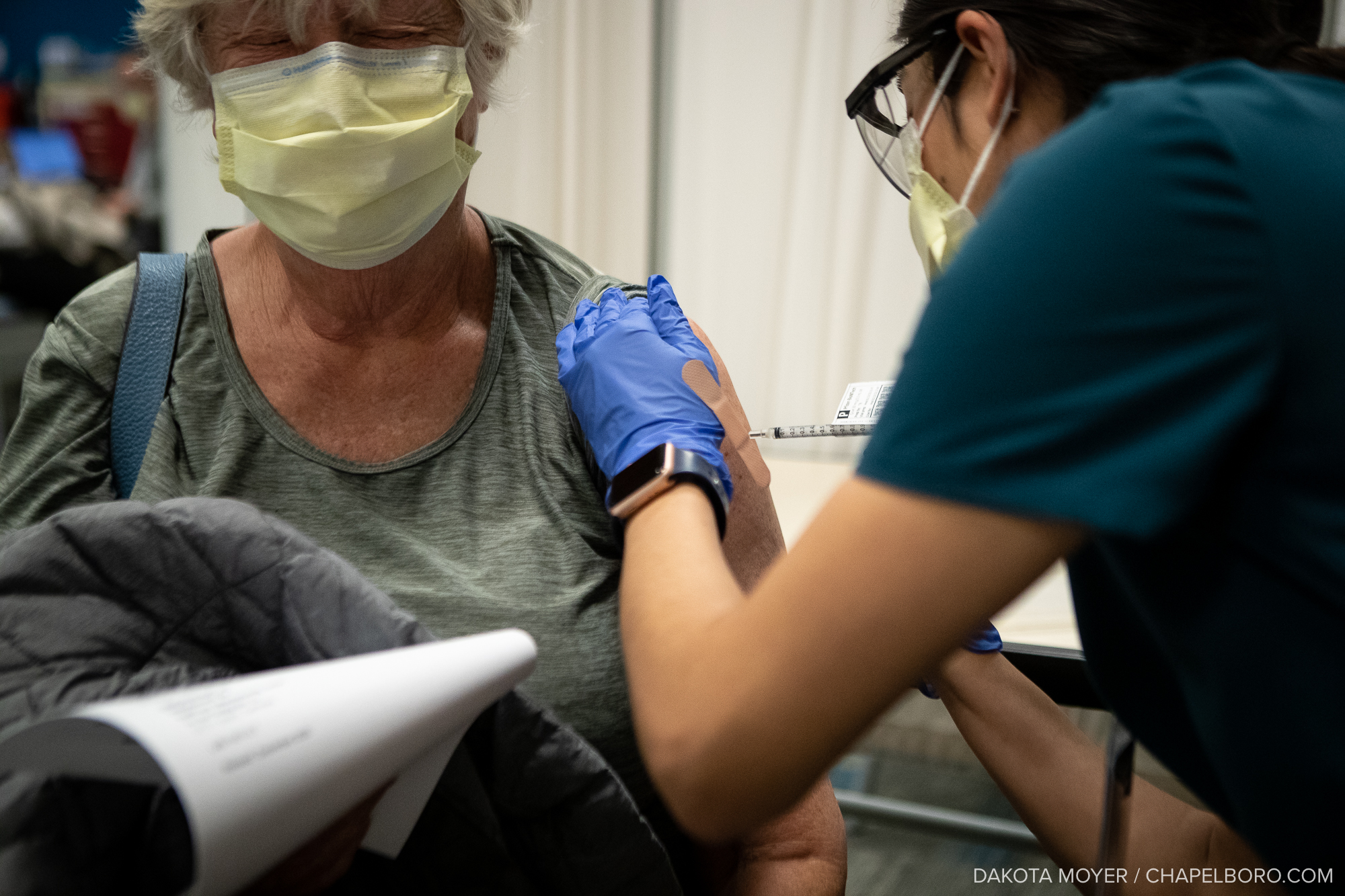Written by WILL WEISSERT and ZEKE MILLER
No honking geese are likely to interrupt his speeches this time.
As President Joe Biden seeks a second term, he won’t have to depend on glitchy Zoom connections, or deliver remarks in largely vacant theaters with attendees in chairs ringed by circle markings on the floor to ensure enough social distancing. His advisers won’t scrutinize the 1918 flu outbreak for clues on pandemic-era voting.
With the country increasingly back to normal, Biden can fly to crowded campaign events on Air Force One, make policy announcements from the Rose Garden and shape not only the presidential race but global affairs with his actions.
Just as the 2024 campaign will be vastly different from the coronavirus-marred 2020 edition, Biden won’t be able to hold on to the White House by running in the same way he won it three years ago. Virtual events offered from a basement rec room he converted into a studio in his Delaware home and avoiding travel for months at a stretch won’t cut it this time.
A return to more typical campaign rhythms presents both opportunities and potential challenges for Biden.
Lockdowns made the 2020 campaign far less grueling, so much so that Donald Trump frequently accused Biden, now 80, of ignoring voters. But avoiding crowds also often made it harder for Biden to ignite supporter enthusiasm. He also averted the kind of spontaneous interactions with the public and the press that led to memorable gaffes in the past, but sometimes created endearing moments.
“If any presidential candidate benefited from the virtual mold of 2020, it was Joe,” said Democratic strategist Nicole Brener-Schmitz. “But he’s shown over the course of his presidency that he’s perfectly capable of the travel and the rallies and the events and the town halls. There shouldn’t be any concern about there being a ‘normal’ campaign and the American public going, ‘Oh no.’”
Biden advisers say that among the many societal changes wrought by the pandemic, campaigning changed too. Voters adapted to using different platforms to engage with politics and candidates. Biden’s team also notes that the president is the only successful national candidate so far in that new environment, and his advisers aim to build on the lessons of 2020, finding novel ways to deliver the most effective message to individual voters.
Biden himself likely won’t miss campaigning online. When giving one of his first virtual addresses in March 2020, he lost his place in his prepared remarks and gestured awkwardly to staff standing out of frame. Two months later, as Biden virtually addressed members of the Asian American and Pacific Islanders Victory Fund, a more jarring off-camera distraction came from the Canada geese clustered around a pond in his back yard.
“If you hear them honking away, they’re cheering,” Biden joked.
Though the production quality improved over time, Biden’s online presentations were often overshadowed by what Trump was doing — so much so that Biden’s campaign resorted to creating a short-lived podcast. They also studied balloting during the 1918 midterm elections, when turnout dropped amid the flu pandemic.
Even after he resumed in-person campaigning with social distance circles, drive-in rallies and other small events in battleground states, Biden almost always returned each night to sleep at home in Delaware. This time, it would be Air Force Once carrying him back to the White House or Delaware.
One downside of 2020, aides say, was Biden’s inability to meet people on the campaign trail. Even with Secret Service protection, brief one-on-one time will now be possible — but that also increases the likelihood that Biden will say something he regrets.
In December 2019 a man in Iowa suggested Biden was too old and also raised questions about the then-candidate’s son’s overseas business ties. Biden called him a “damned lair” and suggesting a pushup contest — reminiscent of times his verbal blunders as vice president made some in the Obama White House blanch.
Biden was also at his weakest during in-person campaigning early in 2020. Despite joining the race as the perceived frontrunner, he lost the first three Democratic primary contests and only clinched his party’s nomination after the pandemic took hold.
He offered a mainstream agenda that appealed to Democratic moderates early, but moved to the left as the general election approached — promising sharp federal spending increases on health care, social programs and the environment while boosting domestic manufacturing and the nation’s crumbling infrastructure.
With Democrats controlling Congress through last year, Biden fulfilled many such promises. But he’s shifted to the center more recently, which some progressives say will alienate the Democratic base.
“Unless he’s hermetically sealed and doesn’t want to talk to anybody under 30, he’s going to be asked, ‘Gee, you said the last time you ran for president dot, dot, dot. What’s up with that?’” said Norman Solomon, national director of RootsAction.org, a progressive group that championed the “Don’t Run Joe” campaign attempting to convince Biden to forgo seeking a second term.
Pandemic aside, the 2020 campaign was unique in unfolding as a summer of protests decrying police brutality and racial injustice erupted after George Floyd’s killing. Biden was unable to get Congress to approve major criminal justice reform, leaving some Black activists disillusioned that more wasn’t done on that issue or to protect voting rights nationwide.
An Associated Press-NORC Center for Public Affairs Research poll last week found the president’s 58% approval rating among Black adults was down sharply from the roughly 9 in 10 who approved of Biden over his first months in office.
Only about half of Democrats polled said they wanted Biden to run again, but 81% said they’d at least probably support him in next year’s general election. Among Black adults, though, the enthusiasm lagged: Only 41% said they want him to run and 55% said they were likely to support him in the general election.
Questions about the 80-year-old Biden’s physical stamina, meanwhile, will be more pronounced this time, as Biden would be 86 at the conclusion of a second term.
Aides concede that the travel and rigors of a normal presidential campaign are brutal, but not compared to the demands of the presidency, with its jam-packed intercontinental trips and middle-of-the-night wake-up calls to respond to global crises. And for much of the next year, Biden will be most intently focused on his day job, with his advisers arguing that being an effective president makes the case better than anything else for another four years in the White House.
Democrats also note that, unlike 2020, when lockdowns saw the party and its top outside supporters abandon knocking on doors and other in-person activities to mobilize their base voters, such efforts will be back this time.
Lee Saunders, president of the American Federation of State, County and Municipal Employees, which has 1.4 million members nationwide, said voter mobilization efforts have run continuously since the pandemic eased. Those helped Democrats to a surprisingly strong midterm election showing, are already under way for 2024, he said, and are focusing on the legislative achievements of Biden and his party.
“We just have to talk about those victories. All of us collectively: labor and allies, and the White House, and our friends on the Hill and our governors and our state reps and our mayors,” Saunders said.
Biden’s team has concentrated most on running again against Trump. Even a rematch wouldn’t feel like 2020, though, since Biden will be the incumbent. That worries Solomon, who said the Biden White House has been “exuding complacency” by insisting that Biden can top Trump again in 2024.
“These refrains coming out of the White House, ‘Oh, he beat Trump before, he can beat him again,’” Solomon said. “This time, Biden is gonna represent the status quo as an incumbent. That’s a fundamental problem.”
But Brener-Schmitz noted that the incumbent always has an advantage, being able to tap into Democrats’ nationwide supporter base and infrastructure, allowing the president to concentrate on connecting personally with voters.
She added: “This is where Joe Biden thrives.”
Photo via Gemunu Amarasinghe/Associated Press.

